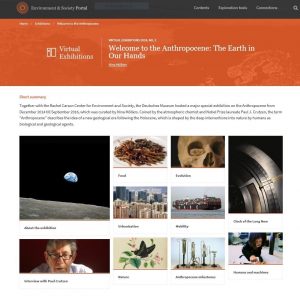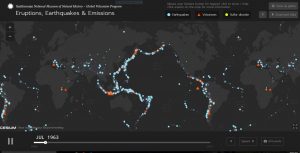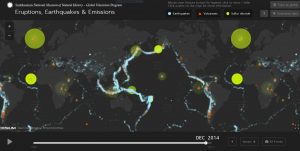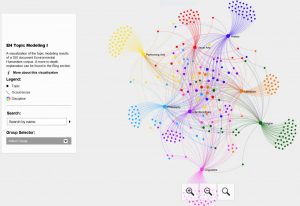Environmental humanists can harness tremendous amounts of data through advanced computing. “Big Data” approaches such as data mining and geographic information systems (GIS) are opening up new research questions, scales of analysis, visualizations, audiences, and means of interaction. Humanities scholars also re-contextualize data-based research from the natural sciences to reach new conclusions. Emory University and other institutions around the globe are linking digital tools with cutting-edge environmental humanities research. Here are some recent and ongoing projects:
The Emory Center for Digital Scholarship (ECDS) publishes Southern Spaces, a peer-reviewed, multimedia, open-access journal that explores the real and imagined spaces of the U.S. South and the region’s global connections. ECDS and the Department of Environmental Sciences at Emory have created the Georgia Coast Atlas that examines the region’s cultural, historical, and environmental intersections through aerial and terrestrial photography, essays, time-lapse videos, interviews, and dynamic interactive maps. The project is accessible to all.
The Rachel Carson Center for Environment and Society hosts Virtual Exhibits, which include Welcome to the Anthropocene: The Earth in Our Hands. Welcome to the Anthropocene explores human interventions into nature, including influences on climate and environment, and how they, in turn, shape humans’ ways of thinking.

Screenshot from the virtual exhibition “Welcome to the Anthropocene: The Earth in Our Hands” by Nina Möllers. Environment & Society Portal, Virtual Exhibitions 2014, no. 2. Rachel Carson Center for Environment and Society
Smithsonian Institution’s Eruptions, Earthquakes, and Emissions application documents global eruptions, earthquakes, and emissions since 1960. Data visualization tools like this enable humanities researchers to ask new questions about the impact of environmental processes on human migration, culture, and politics.


Text analysis tools, like McGill University Digital Environmental Humanities’ Topic Modeling Visualizations, allow researchers to visualize links between disciplines through the use of similar environmental terms.
